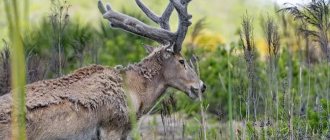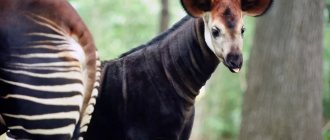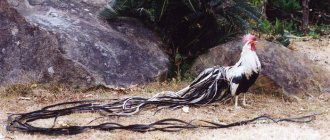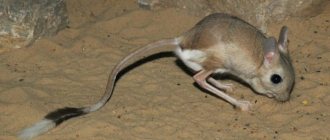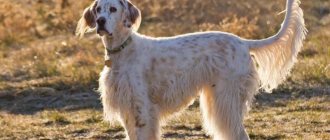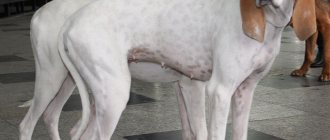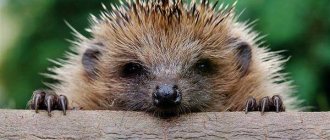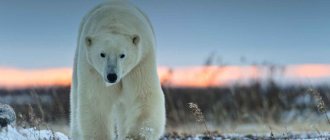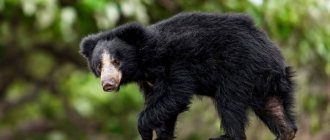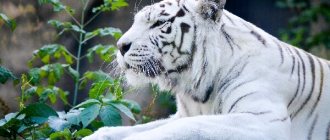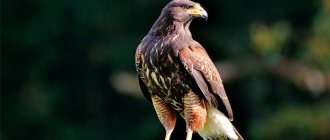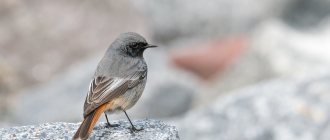Deer have short, yellowish to dark brown fur.
The underbelly and throat are a lighter shade, and many species have a distinctive rump patch—an area of light hair bordered by darker hair. When startled, a deer raises its tail and displays a white patch on its rump to alert other deer nearby.
In addition to displaying a spot on the rump, deer communicate through sound and smell, and they produce a variety of vocalizations, from the roar of a red deer to the whine of a muntjac. Deer also have scent glands near their eyes, which they use to mark their territory on branches and twigs. Dung is also used as a territorial marker. Males will smell the female's urine to see if she is in heat.
Deer run fast
Photo: Hari Nandakumar
Deer's legs are long and thin, well adapted for fast running, which allows him to escape from numerous predators. Over the course of evolution, deer leg bones became longer and the animal's weight was supported entirely by the third and fourth toes, eventually leading to the development of cloven hooves. The second and fifth fingers are short and pointing upward. The first finger has disappeared, and the bones of the palm (metacarpal and metatarsal bones) are connected into a single bone - the tibia. Similar evolutionary changes occurred in other herbivores, which were often forced to flee from predators.
Speed nicknames
Deer are very fast animals. Therefore, “fast” names are perfect for them.
Plump Mustang
- Bugatti
- Chiron
- Rolls Royce
- McLaren
- Ferrari
- Porsche
- Tesla
- Corvette
- Toyota
- Mustang
- Nissan
- Mazda
- Jaguar
- Lamborghini
- Mercedes
- Dodge
- Aston Martin
- Bentley
- Ford
- Audi
- Renault
- Luck
- Greaties
- Hurd
- Lebelo
- Rapid
- Scattering
- Agility
- Rush
- Turnover
- Pace
Deer originated in Eurasia
The earliest fossils of deer are found in the Oligocene layer. In the early Miocene, they spread throughout Asia (and were thus able to dominate the large horned animals that arrived later). During the Miocene, members of this family migrated to North America. When the Panama Land Bridge formed in the Pleistocene, deer crossed into South America.
Perhaps the most famous fossil species is the giant Irish elk (Megaloceros giganteus). Although this moose was not as large as modern moose, its antlers were 1.8 meters wide and weighed more than the rest of the animal's skeleton. Analysis of fossil specimens suggests that the Irish elk was well adapted to life in the open air and could run quickly over long distances. The common name is misleading, as Megaloceros giganteus was neither elk nor Irish, although the first specimens were found in Irish peat bogs. Long before the Irish moose came to the attention of science, the Irish used its huge antlers as gateposts and, in County Tyrone, even as a temporary bridge.
Deer live throughout most of the globe
They are found in most countries of the world, with the exception of sub-Saharan Africa, Australia and Antarctica. As an introduced species, deer have flourished in New Zealand, Cuba, New Guinea and other places. For large herbivores, they are surprisingly adaptable to different living conditions. Although most enjoy wooded areas, some deer have adapted to semi-aquatic habitats (Chinese water deer and elk), open grasslands (South American pampas deer), and arctic tundra (reindeer). But only one species of deer, the reindeer (Rangifer tarandus), has been fully domesticated.
Photo: www.home-school.lovetoknow.com
Creative English nicknames
Uncommon English names sound unusual as deer names.
Fluffy Orestes
- Gaspard
- Erlul
- Noel
- Gustav
- Guido
- Perry
- Walter
- Vassa
- Rufin
- Pius
- Edmure
- Aaron
- Ebba
- Ennata
- Orestes
- Thea
Rudolph the reindeer from the cartoon about Santa Claus
- Marin
- Kane
- Heron
- Amadeus
- Digna
- Abel
- Casilda
- Titus
- Luhmann
- Harper
- Titania
- Millicent
- Elijah
- Evan
- Weston
- Xander
- Alpin
- Baz
- Annikk
- Ethan
- Jacob
Deer are herbivores
Lacking upper incisors, they bite food by pressing the lower incisors against the callous pad on the upper gum. Their teeth have low crowns well suited to their plant-based diet, which, depending on the species, includes twigs, leaves, aquatic plants, fruits, lichens and grasses.
Deer vary their diet depending on seasonal food availability and their nutritional needs. Fallow deer, for example, eat a lot of grass; it makes up about 60% of their diet in summer. As the proportion of grass in their diet decreases, deer turn to fruits, which make up nearly 40% of their diet in mid-autumn. The winter diet consists of woody stems of shrubs such as ivy and holly. During harsh winters, deer can strip bark from trees and eat it.
Additionally, some temperate species, such as white-tailed deer, actually change their metabolism during the winter, reducing their need for food and therefore reducing the likelihood of starvation. This natural adaptation is so strong that even in captivity in winter, if there is enough food available, these species will eat less.
Home care and maintenance
Such insects are born and spread not only naturally. People also breed these beetles with remarkable external characteristics artificially. First of all, this is done to restore the stag population.
Suitable conditions are created for their growth and development, and real pyramids are erected from oak rot. The basis of these “houses” are tree trunks driven into the forest soil. And in this favorable microclimate the beetles lay, the larvae of stag beetles develop and thrive.
Insect fans also breed beetles at home, which gives them the opportunity to observe the life of these creatures. Specialist breeders raise beautiful specimens of staghorns also for sale. This process is difficult and lengthy, requiring patience and the necessary knowledge. And this is how it goes.
Suitable containers are taken (no matter what material they are made of) and filled with sawdust. They contain the testicles of stag beetles. Now the main thing is to ensure that the humidity and temperature in this cage is close to natural.
Here, careful monitoring of the development of the larvae is necessary in order not only to ensure their proper formation, but also to protect them from parasites and fungal diseases. If everything is done correctly, then in five years a miracle will appear to the world - a domestic stag beetle , and perhaps more than one. These pets are fed sugar syrup, to which you can add juice or honey.
Deer are ruminants with a four-chambered stomach.
When food is swallowed, it enters the first chamber, the rumen, where bacteria begin to break it down. Later, the deer regurgitates the food back into its mouth and, like cud, chews it again and mixes it with saliva. When swallowed again, food bypasses the rumen and enters the second chamber of the stomach, the reticulum, and then passes into the third chamber, the abomasum, and later enters the fourth chamber, the abomasum. The food then moves to the small intestine where nutrients are absorbed. Although this entire process takes about 80 hours, it converts about 60% of the cellulose found in food into healthy sugars and is thus extremely effective.
Photo: Ethan Garvey
Finding food and feeding takes them almost the whole day
Like all herbivores, deer must spend a lot of time searching for food. A study of wild red deer in Scotland found that females without calves spent 9.8 hours foraging in summer, while larger males spent 10.4 hours. Lactating females with cubs spent 11.1 hours per day feeding. Spending a lot of time feeding makes deer vulnerable to predators, but their herd habits and ability to feed quickly and store food in the rumen help make them less vulnerable.
Deer have many enemies
In North America, mature deer are preyed upon by brown bears, bobcats, cougars, coyotes, wolves, wolverines, and packs of stray domestic dogs, while golden eagles sometimes take young deer. In South America, deer are caught by jaguars. Eurasian deer often encounter wolves and tigers. One reptilian predator, the Indonesian Komodo dragon, is heavily dependent on the maned sambar (Cervus rusak timorensis). People have also hunted deer for a long time. Other causes of death can be fights between males, car and train accidents, falling through the ice, drowning in swampy areas, getting stuck in fences or trees, getting caught in forest fires, and falling from cliffs. Many deer shot by hunters escape only to later die from their wounds. Particularly harsh winters are also to blame for the decline in deer populations.
Nicknames of the northern regions
Deer are the key inhabitants of the northern regions. This means you can borrow an exotic name from the dialects of the northern peoples.
Round Nilka
- Saryk
- Kara-gudai
- Oskizek
- Dondok
- Duenje
- Sarynay
- Kuu
- Bora
- Kara
- Buyun
- Hunuk
- Utmeben
- Moykachan
- Gulkichen
- Nilki
- Uty
- Iracha
- Jakarin
- Hanga
- Nakatan
- Yasapu
- Chirivan
- Chirique
- Nebati
Deer antlers are found mainly on males
Antlers are the defining characteristic of this family: all species except the water deer (Hydropotes inermis) possess these cranial appendages. Antlers are composed entirely of bone tissue and often have complex branching patterns. The horns grow from a flare (“pedicle”) on the frontal bone of the skull and are connected to the skull by a suture known as a burr. The sutures that attach the antlers to the deer's head decalcify annually (under the control of hormones), causing the antlers to fall off (usually in late fall or early winter in species that live in temperate climates).
Photo: Luis Villasmil
Deer spend a lot of energy growing antlers, which become more complex each year, with more teeth or “points.” Antlers are often damaged during fighting during the mating season, severely limiting the male's reproductive success. A study of male red deer with damaged antlers found that they had less mating success than males with intact antlers. However, experimental dehorning of a dominant male proved that this was only a temporary setback; despite the loss, the male retained his status and his females.
After molting, the antlers soon begin to grow back. During the growth period, the expanding bone is covered with a thin layer of skin with short, fine hairs. The skin, aptly named velvet, helps protect growing bone tissue. This skin feeds the antlers with copious amounts of blood until they reach full growth in late summer. Then the blood supply stops and the velvet dries out.
Unlike cattle's antlers, the regular shedding of antlers makes them a current marker of a deer's status: their size and shape are directly related to age and dominance. In the vast majority of species, only males bear antlers; only in reindeer (Rangifer tarandus) do females also regularly grow antlers.
Horns are a social and sexual symbol as well as a weapon. The huge antlers of Irish elk were the long-term result of sexual selection, which continually resulted in females mating with males with the largest antlers. This may explain how the gene for large horns was passed down from generation to generation until a huge span of 1.8 meters was achieved.
Description and features
This beetle is capable of making an impression at first sight. First of all, he amazes with his strong physique and extraordinary size. Specimens of individual subspecies can boast a length of more than 9 cm.
In addition, a very noticeable part of this insect is a pair of polished brown, sometimes with a reddish tint, mandibles, that is, upper oral jaws, giving the entire appearance of the giant a very original, almost fantastic look.
The mandibles are so huge that they make up a third of the length of the body, and only in some varieties they do not stand out too much. Although these are jaws, due to their size, it is not possible to chew or gnaw anything with them. This is a bug weapon.
Male individuals, in which the indicated oral structures, as well as the entire body, are much more developed than in female beetles, use them during competitions with each other, constantly starting quarrels among themselves.
Such mandibles are equipped with serrations and bizarre processes, which makes them look like deer antlers. Such associations prompted man to give this biological species the name stag beetle . However, the mandibles of the described insects, of course, have nothing in common with the horns of artiodactyls.
These are rather claws, like those of a crab or crayfish, with points directed inward, like curly sugar tongs. They are even equipped with teeth, and therefore the beetles bite with them, and do not butt, and so seriously that, in principle, they are capable of damaging even a human finger extended to them, but they do this in exceptional cases, because they use this weapon only in the fight against their fellows.
Parts of the elongated body of beetles are, first of all, a flat top, rectangular-shaped, black head, equipped with faceted eyes on the sides and antennae protruding from the front, constructed from movable plates. Attached to the head is a chest of the same color, equipped with powerful muscles.
And behind it comes the abdomen, completely hidden by hard, dense elytra, predominantly reddish-brown in males and brown-black in females, often covered with a pattern that is individual in each species. Behind these protective formations are thin, delicate, veined wings.
Beetles also have six long, segmented legs. Their legs have a pair of claws with bristles at the end, which allows the beetles to climb trees. The sensory organs, in particular smell and taste, are the palps with hairs located on the lower jaws. The impressive appearance of this giant from the world of insects is shown in the photo of the stag beetle .
Deer have three mating strategies
During the mating season in temperate species, males use one of three strategies to gain access to receptive females. They may defend territory that overlaps the ranges of females, just like the muntjac. They can protect a single doe from all suitors, just like the white-tailed deer does. Or they may try to gather and hold a harem of females, as the red deer does. Males and females of this gregarious species spend most of the year in single-sex herds, which usually have specific habitats. In September, females gather at the rutting grounds and are soon joined by males, who compete for females by roaring, spraying urine, and wrestling.
Noble nicknames
A stately and noble appearance suggests an equally noble nickname.
Incredible Beatrice
- Knight
- Knight
- Master
- Grandee
- Lancelot
- Adele
- Sheri
- Parfait
- Vivien
- Ninon
- Oliver
- Rupert
- Rory
- Terrence
- Vincent
- Richard
- Thomas
- Monty
- Joseph
- Beatrice
- Leslie
- Emily
- Olivia
- Quinn
- Zoe
- Enzo
- Danton
- Antoine
- Emil
- Leon
- Lucien
- Devereux
- Aubin
Deer engage in fierce fights
Photo: Edward Taylor
The fight begins when a contender for the female appears. The stranger and the harem owner growl at each other. After a few minutes of roaring, they begin to move parallel to each other, tense and wary, until one of them turns to the other and lowers its horns. The males lock horns and begin to push each other. When one manages to push the other away, the losing opponent runs away.
Fights are very dangerous. Nearly a quarter of the males in the Scottish study were injured during the rut, with 6% dying. A male aged 7-10 years has the best chance of winning such a fight, which the harem owner faces approximately five times during the mating season. In addition to injury, there is another danger to the harem owner: young males often hide on the outskirts of the harem, waiting for the harem owner to be distracted, and then "kidnap" one or two females. The apparent benefits of having a harem are deceptive; although there may be up to 20 females in a harem, a male may father only four or five fawns.
Did you know?
- The deer family includes 51 species, which are divided into 19 genera and 3 subfamilies: water deer (Hydropotinae), Eurasian deer (Cervinae) and roe deer (Capreolinae).
- The smallest deer species is the Pudu, growing to 25-43 cm at the shoulder and weighing 6-10 kg. The largest species is the European moose, whose height at the shoulder reaches 140-235 cm and weight 200-600 kg.
- Some deer species, such as water deer, muntjac deer, and tufted deer, have protruding canines. In other species, the upper canines are either vestigial or absent. Toothed deer are considered to be more ancient in evolutionary terms than deer with antlers because tusks are characteristic of primitive fawns, or mouse deer. Later species of deer are thought to have large bodies, large and complex antlers, and a more herd social system.
- Females of tropical deer species come into heat several times a year. Pregnancy lasts from 176 days in water deer to 294 days in roe deer. A female deer gives birth to one to six fawns, but one or two fawns is the norm. Most deer babies are born spotted.
- White-tailed deer may be the most abundant species of wild large mammal, with a population of approximately 60 million individuals.
